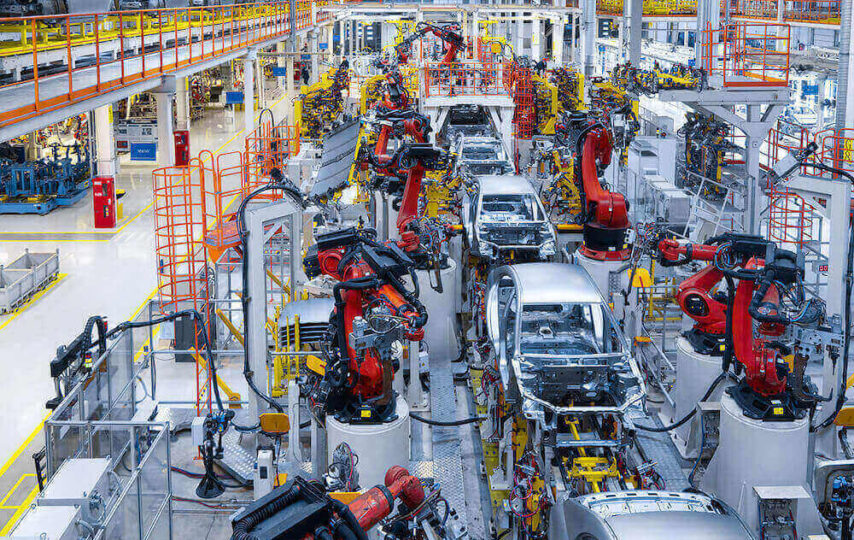Innovation is embedded in the automotive industry. Since 1871, manufacturers have developed and adopted new and exciting technologies to provide customers with forward-thinking, safe, and comfortable vehicles. By doing so, they can gain a competitive advantage and generate substantial annual sales.
While modern vehicles now feature advanced features and provide exceptional safety, manufacturers will always aim to incorporate the finest tech into their latest makes and models. In modern vehicles, the Engine Control Module is considered to be a vital component. Therefore, engine control module programming is necessary to enhance a vehicle’s engine performance. However, some systems will likely transform the sector within the next few years. Learn about the technologies changing the automotive industry.
Electric Vehicles
Despite its many advantages, the automotive industry is a major contributor to air pollution and greenhouse gases. To reduce their environmental impact, many automotive manufacturers have taken the steps to provide customers with fuel-efficient cars. For example, Toyota, Honda, Kia, and Hyundai now produce some of the most fuel-efficient vehicles on the market.
However, electric cars are expected to play a more prominent role in the automotive industry. Since Tesla launched its powerful electric cars, greater pressure has been placed on manufacturers to introduce the technology into their vehicles. Electricity-powered cars will provide customers with greater fuel efficiency, as the Tesla Model 3 can hit the road for between 220-310 miles after a single charge.
With an increased demand for the technology due to its smaller environmental impact and money-saving potential, most manufacturers are expected to introduce electric vehicles to their ranges.
For instance, General Motors and Volkswagen have already unveiled their range of electric cars that have not hit the market yet. The likes of Volvo, Toyota, and Kia also plan to introduce hybrid vehicles to provide their customers with greater fuel efficiency. Therefore, PwC predicts more than 55% of new European car sales will be fully-electrified by 2030.
The Internet of Things (IoT)
The IoT is transforming industries of all sizes, and the automotive sector is no exception. It works by interconnecting devices that will allow them to send and receive data.
At present, the IoT has three primary uses in the auto sector:
- Electronic logging devices (ELDs)
- Usage-based insurance (UBI)
- In-vehicle health monitoring
The above technologies can connect cars and trucks in the cloud, which allows the gathering of big data on the vehicles’ actions and conditions. For example, it can identify driving times, operational safety, vehicle health, miles completed, and even driver behavior.
Biometric identification systems are expected to become an essential technology in vehicles, too, as they can monitor a driver’s health behind the wheel. For instance, they will track fatigue, heart rates, and if a driver is distracted. As a result, they could prevent accidents on the road while improving insurance premiums.
Due to the rise of the IoT in vehicles, many automotive companies are looking to hire knowledgeable, passionate data scientists to create algorithms, design data modeling processes, and build predictive models to extract a company’s desired data. Click here to learn more about what is expected from a data scientist and if it is the right career avenue for you.
Autonomous Vehicles
Many vehicle manufacturers have turned attention toward autonomous vehicles. Audi is a big fan of self-driving vehicles, as they have incorporated a cruise control system into many of their makes and models. It uses 30 control sensors to send a processor information on a vehicle’s surroundings. It can then detect a vehicle ahead and adjust its speed, stop the car, or maneuver, if necessary. Again, data processes rely on self-driving technology, which is why it is a perfect avenue for talented data scientists.
Augmented Reality Dashboards
Augmented reality is not just for gamers. It might one day become an integral feature in vehicles, as it could turn a windshield into a screen to display information. While it sounds like something you might see in a sci-fi movie, it is likely to feature in many cars of all sizes in the coming decades.
The augmented reality screens could enhance the driving experience, as it will display information through the HUD, such as:
- Speed
- Gas mileage
- ROM
- Weather conditions
Also, the displays will not impair a driver’s vision, as they will feature holographic symbols on a windscreen. If anything, it will support safety, as it will allow drivers to review important information without taking their eyes off the road ahead.
Vehicle to Everything (V2X)
Vehicle to Everything (V2X) is a technology that is currently in development. It will enable vehicles to not only connect within one another but with the cloud or another obstacle. For instance, a car could connect with a crosswalk, a traffic light, or a detour sign, which could improve road safety.
While V2X is a long way from completion, one branch of this tech may soon hit the road, and that is Driver Assisted Truck Platooning (DATP). It could help fleet companies cope with driver shortages, as one driver can drive a parade of trucks on the road. To do so, a driver will operate one truck at the front of the platoon, and the connected trucks will follow the vehicle autonomously.
Optimization Technology
Optimization could soon improve efficiency on the road. Companies can view big data accumulated by tracking devices to optimize drivers’ routes and consolidate their goods, which can lead to lower mileage and smaller gas expenses.
For example, a tax company using optimization technology could plan the best routes for its customers. Plus, it could identify peak hours ahead of the time, which will allow them to avoid traffic jams or increase their rates.
Automatic Transmission (AT)
Shifting gears manually might cease to exist in the future. There is an increased demand for manufacturers to incorporate automatic transmission into their vehicles. The self-shifting transmission features a fully automated gearbox, which will automatically change gear ratios while a vehicle’s wheels are in motion. While it is not a feature in every car, you can enjoy automatic transmission from many well-respected brands, such as BMW, Porsche, Jaguar, and Ford.
3D Printing
3D printing is helping to improve many industries, such as healthcare, retail, and construction. However, it might surprise you to learn that the technology is also transforming the automotive industry. Manufacturers are now using 3D printing to create specific parts or complete vehicle models at a faster rate.
Also, the 3D printed tools are not as heavy as traditional options, which helps manufacturers build lighter vehicles with more resistant materials. What is more, the technology can lower manufacturing costs, increase production rates, and boost a company’s profit margin.
3D Gesture Technology
3D gesture technology is not a feature in any car on the market right now, but you can expect it in many vehicles in the future. With a wave of your hand, you could take control of many vehicle elements. It will eliminate the need to touch buttons to turn the radio channel or accept an incoming call. All you will need to do is point toward the screen of the infotainment system, which will make driving safer and easier, as you will never need to take your eyes off from the road.
Automated Parking Systems
Finding a parking space can be annoying, especially if you are in a rush. If this is a daily frustration, you will be pleased to learn that you could one day avoid the process altogether thanks to automated parking systems.
The infrastructure would allow you to drop your car off at a garage’s entrance, and it will then find an available parking space using autonomous vehicle technology. Once you are ready to pick up your vehicle, all you will need to do is tap a button on an app, and it will send a signal to your car to return to the entrance to pick you up.
Annual Model Cycles and Updates
As many vehicles run on electricity and feature autonomous and connected technologies, it may increase manufacturers’ innovation rates. While most model cycles are between five to eight years, manufacturers may release annual ranges to provide their customers with the latest software and hardware developments. However, as most customers will not want to buy brand-new cars every year, customers could receive regular upgrades for their existing vehicles.
Conclusion
The auto industry will become more flexible, safer, and responsible than ever before. Drivers could soon enjoy an electrified, connected, autonomous, and shared driving experience, which will enhance their experience on the road.
The new technologies are expected to reinvent the sector. They will not only lead to cheaper and more comfortable vehicles, but they will change the lifespan of models and provide drivers with greater updates to enhance a car’s performance.
Of course, it is not only drivers who will benefit from the industry innovations. By gathering large sets of data, improving connectivity, and lowering vehicles’ environmental impact, the automotive industry could overcome some of its biggest hurdles, such as road safety and air pollution. The innovative tech has also opened the door to many data-centric professions, and it could transform the operations of transport and logistics companies across the globe due to improved efficiency and lower expenses.








